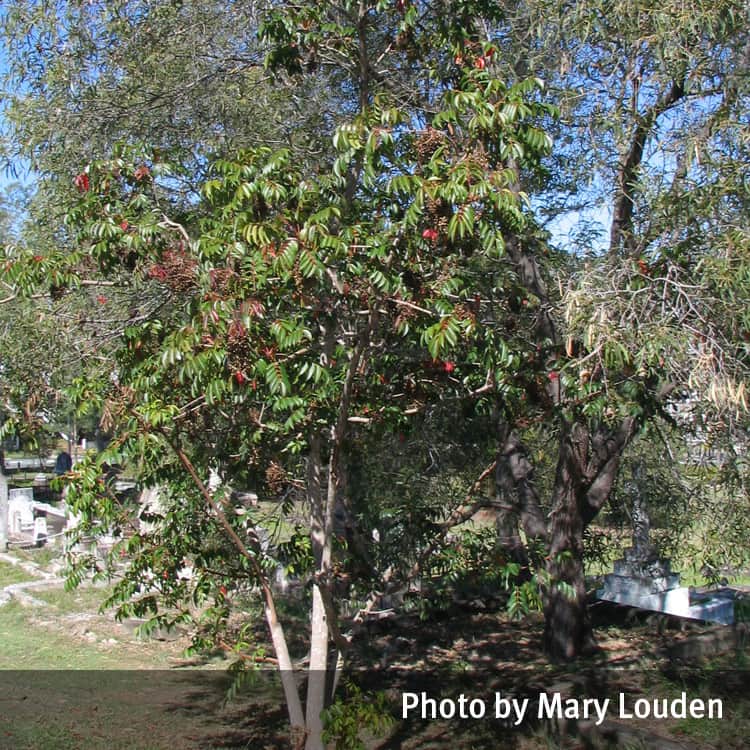Warning
For all eye exposures to sap, rinse the eye with water for 15 minutes and then seek urgent medical assistance.
Description
A small deciduous tree up to 8m tall, cultivated, cultivated as a garden plant for its spectacular scarlet and crimson autumn foliage.
The flowers are small, creamy white to yellow, found among the leaves.
Toxicity
Symptoms
Severe painful allergic reactions can occur between 12 hours and 7 days after contact. These reactions include severe dermatitis that begins with a rash, redness, itching and blisters where skin has made contact with the tree. Localised swelling of the face, arms and legs is often associated with the rash. All of these symptoms usually last 7 to 10 days. However, chronic sufferers or more sensitive individuals may experience more extreme symptoms over a longer period of time. Contact with any part of the tree can cause these symptoms, but it is the sap that can cause the most severe reaction. Sensitivity to this plant can have an cumulative effect over a number of years, with initial exposure not necessarily causing a significant reaction. However, subsequent contact will result in stronger allergic reactions.
Images

Details
Common name: Rhus
Botanical name: Toxicodendron succedaneum (also known as Rhus succedanea).
Other common names: Scarlet rhus, Japanese wax tree, Sumach, Wax tree, Poison sumac
Family: Anacardiaceae
General description: A small deciduous tree up to 8m tall, cultivated as a garden plant for its spectacular scarlet and crimson autumn foliage.
Flowers: The flowers are small, creamy white to yellow, found among the leaves.
Leaves: Leaves are divided, with nine to 15 small leaflets in pairs, usually with one terminal leaflet, and are 5-10cm long.
Fruit/Berries: The fruits are yellow to pale brown when ripe, papery in appearance and hang down on the tree through Autumn and Winter.
Other: The sap is clear.